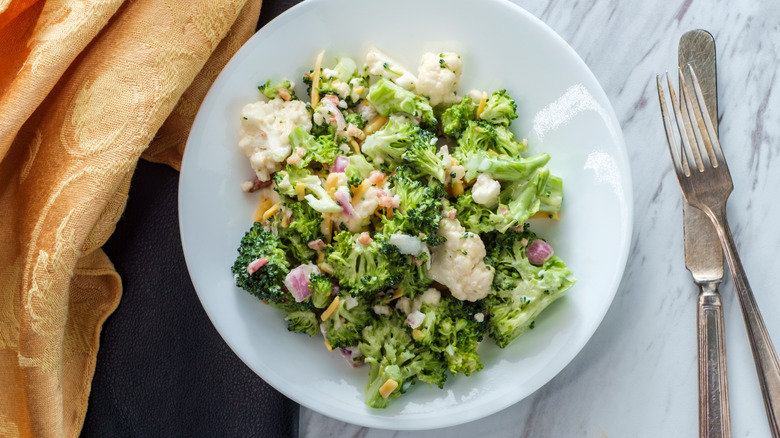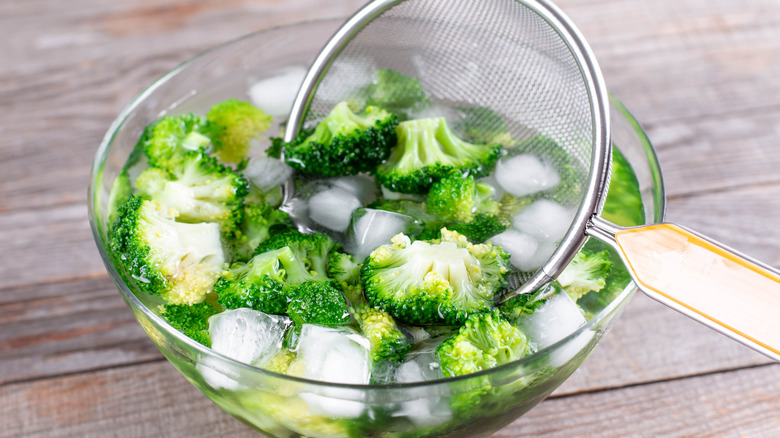Give Your Broccoli Salad An Upgrade By Blanching First
Broccoli salad varies in seasoning and ingredients, but the majority of recipes feature raw rather than cooked broccoli as a key component. This isn't necessarily a drawback; rather, it adds a satisfying crunch that contrasts nicely with softer elements like avocados and cheese. However, a common issue with making a dish with raw broccoli is that the stems can sometimes be tough, and the florets can be crumbly, which isn't ideal in a broccoli salad.
Fortunately, if you want to address this textural flaw, all you have to do is blanch your broccoli. Blanching broccoli involves immersing it in boiling water until its green color becomes more vibrant, then immediately cooling it in ice water. This process slightly tenderizes the broccoli without removing the crunch, unlike boiling, where the broccoli becomes soft. Blanching also hydrates the dry florets, making them less crumbly. The resulting texture change can significantly level up your final salad.
How blanching transforms broccoli salad
Improving the texture is perhaps the most obvious benefit of blanching broccoli, but it also subtly transforms the flavor. Raw broccoli has a distinct taste often described as strong and bitter, especially if not well balanced with other ingredients. Blanching can help mitigate this bitterness while bringing out the natural sweetness of the vegetable. Plus, it tones down any earthiness, making the broccoli salad more palatable for those who may not enjoy its typical flavor profile. As an additional benefit, blanching makes veggies look more vibrant.
Be aware the blanching the broccoli also changes the nutritional value of your salad. Broccoli is high in vitamin C, which is heat-sensitive. This means the vitamin C content will be significantly reduced when you blanch it. Nutritionally, the only advantage to blanching broccoli is that cooking it enhances the body's ability to absorb carotenoids such as beta-carotene and lutein, a type of antioxidant found in broccoli.
How to properly blanch broccoli for a broccoli salad
If you're not careful, broccoli can go from blanched to boiled pretty quickly. To avoid overcooking, add the broccoli to the water only after it has reached a rolling boil, and remove it after no more than two minutes. Don't skip dunking it in cold water, as this step stops the broccoli from cooking further and preserves its crispness. Also, make sure to drain your broccoli after it's cooled down to prevent excess moisture from making other ingredients in your salad go soggy.
If you accidentally overcook and boil your broccoli, it can still be used to make a tasty salad. Just be sure to serve it immediately, because the acidity in many salad dressings will cause the broccoli to soften even further. As such, it can also help to reduce the amount of lemon juice or vinegar in the dressing. And since boiled broccoli tends to be mushier, toss the ingredients more gently. Taste and texture-wise, your salad will still arguably be better than one made with raw broccoli.


